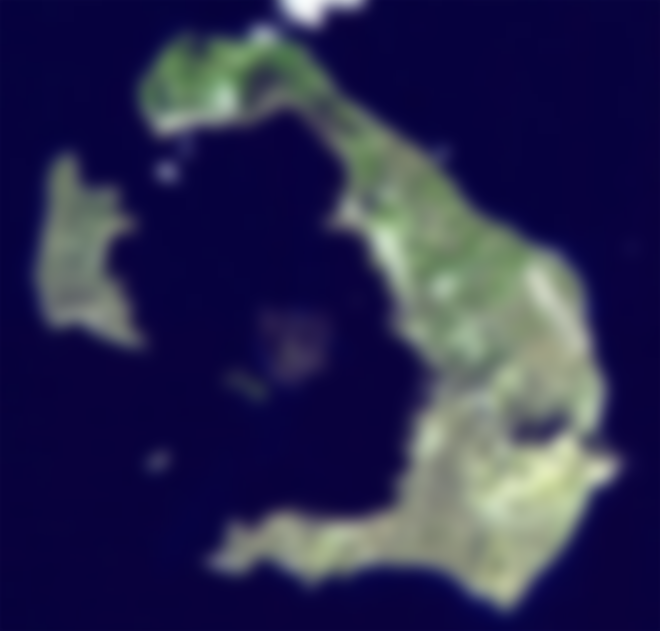People above all love stories, and myths and legends ignite our imagination. The Lord of the Rings is a famous modern fairy tale, the story of a dark, frightening mountain full of steam. The fire emitted by Stromboli, a volcano in Sicily also known as the ‘lighthouse of the Mediterranean’ fascinated Tolkien so much that he was inspired by it when he created the mountain of fire in his novels.

In a way, this modern mythical mountain is based on something real. And it turns out that there are a lot of much older stories that have more than a piece of truth in them, and here is a selection of some of the most interesting ones.
Crater Lake and the Battle of the Gods!

The Klamath Native American tribe believes that Crater Lake was once a high mountain called Mazama. In it lived Llao, the deity of the underworld.
After a great battle with Skell, the god of the heavens, fire and sulfur flew in the sky between Mazam and the nearby Shasta Mountains. Llhao lost the battle and returned to the underworld. Skell collapsed the mountain on him and captured him forever, and at the end he placed a beautiful blue lake on top of Lla's prison.
The myth actually describes a 7,700-year-old volcanic eruption, which geologists know was more than 40 times stronger than the famous May 1980 cataclysm at Mount St. Helen. A huge magma reservoir pierced the crust, made a hole in the environment and left a huge crater that was later filled with rainwater.
Sri Lanka and the floating bridge!

The Ramayana, an Indian Sanskrit epic, contains an ancient plot with kidnapping. Sita, the wife of the god Rama, was stolen and taken to the Kingdom of Demons on the island of Lanka. An army of ape-men together with Rama’s brother Lakshman built a floating bridge (Rama’s Bridge), between India and Lanka, with which they crossed the island and successfully defeated Ravana, the demon king. Although the story itself is full of amazing details, the bridge itself really does exist. Aerial observations clearly show a 48-kilometer-long underwater chain of limestone and sand rocks that stretches between two land masses.
The bridge, which in some parts is just a few feet below the water's surface, was probably the inspiration for an ancient Hindu legend. Supposedly this natural bridge was above the water until a strong cyclone in the 15th century brought a strong storm into the canal and submerged it.
Guest star!

Around 1006, astronomers around the world noticed what they described as a ‘guest star’ in the sky. But the Persian scholar Ibn Sina provided a much more detailed description of the event.
In the Book of Healing (Kitab al-Shifa) he explained how an object in the sky, which could be seen for months, changed color all the time. He added that he was emitting sparks before he finally faded.
It has long been thought to be a comet, but we now know how Sina observed a supernova, one that occurred 7,200 years ago and whose visible light reached Earth only at the turn of the first to second millennium. Although the waves of visible light have long since disappeared, the high-energy remnants of the SN 1006 star can still be seen thanks to NASA's Chandra observatory.
The color change in this case could mean the merging of two white dwarfs, which would result in a particularly strong supernova that would radiate numerous colors. This is exactly what Sina described, which means that the legend is not only true, but that it provides modern astronomers with details that would otherwise be lost.
Atlantis!

One of the most famous myths in human history, first described by the Greek philosopher Plato, tells the story of a civilization that at its peak sank under the waves of the sea, and was lost forever. The story is still controversial, but many archaeologists think the historical foundation of this story could be the collapse of the Minoan civilization.
About 3650 years ago, a powerful volcanic eruption shook Santorini, which at the time was known as Thera. A huge chamber filled with magma emptied so catastrophically fast that the island’s core collapsed, sending a tsunami all the way to Crete and flooding much of There with the Aegean Sea. The Minoan civilization literally disappeared beneath the waves and was never heard of again.
Thunder bird and whale!

Another story of Native Americans tells of the Thunderbird, a benevolent supernatural creature that flew from a height and grabbed a killer whale that was taking food from the Quileute tribe.
During the fight, strong waves formed and many people on earth were killed in the resulting chaos. Eventually, the Thunderbird managed to lift the whale out of the sea and throw it to the ground with a loud thud.
Incredibly, but in the 1980s, geologists uncovered evidence of a strong earthquake that occurred off the coast of the northwestern United States around 1700, which shook the ocean floor enough to create a tsunami. Not only did it hit the American coast where a tribe of Indians lived, but it was so strong that it came all the way to Japan.
In addition, Aiornis, a prehistoric giant bird that may have been encountered by early settlers in North America, could be an inspiration for the Thunderbird. With a wingspan of five meters, she would descend on the carcasses of whales to eat them. Although it's not very likely that she would be able to pick one up.
The Great Flood!

We are not talking here about a large boat filled with all kinds of animals. But, as is often the case with ancient texts, the biblical flood of epic proportions may have been based on an earlier story. Specifically, the epic of Gilgamesh.
In this Mesopotamian epic created sometime in the 21st century BC, the gods decided to create a great flood and destroy the world. One of the gods, Ea, told a man named Utnapishtim to make a ship to save himself and his family, along with a number of animals. The story, part of the first great literary work in human history, takes place in more or less the same way as its biblical equivalent. And is there any evidence that those floods really happened.
Geological research shows that the Black Sea lost its source of melted water from glaciers near the end of the last peak of the Great Ice Age, about 11,500 years ago. They mostly melted into the North Sea, and the Black began to dry up. Sometime around the same time, the Mediterranean basin was refilling with water from the Atlantic Ocean. All these seas were separated by land.
But over time, the Mediterranean flooded into the Black Sea. It broke through the sedimentary barrier between them in a rather dramatic way, and anyone who was nearby at the time could witness a waterfall 200 times the size of Niagara Falls filling the almost emptied Black Sea basin with incredible speed.
Could this be the inspiration for those floods in ancient literature? Maybe, but if you’re looking for a direct link between the legendary flood and real-life geological events, take a look at the origins of the Chinese state.
Exciting research has recently confirmed that the worst floods in the last 10 millennia occurred along the Yellow River just on the date listed in ancient writings. Not only that, but unearthed archaeological evidence that the mythical first line of Chinese monarchs, the Xia dynasty, may indeed have existed.
Myths are often beautiful, amazing stories. Science is something else, though. Not only does he tell stories that are true, but he also reveals that myths and fairy tales are sometimes not made up, but that they also tell the truth.






